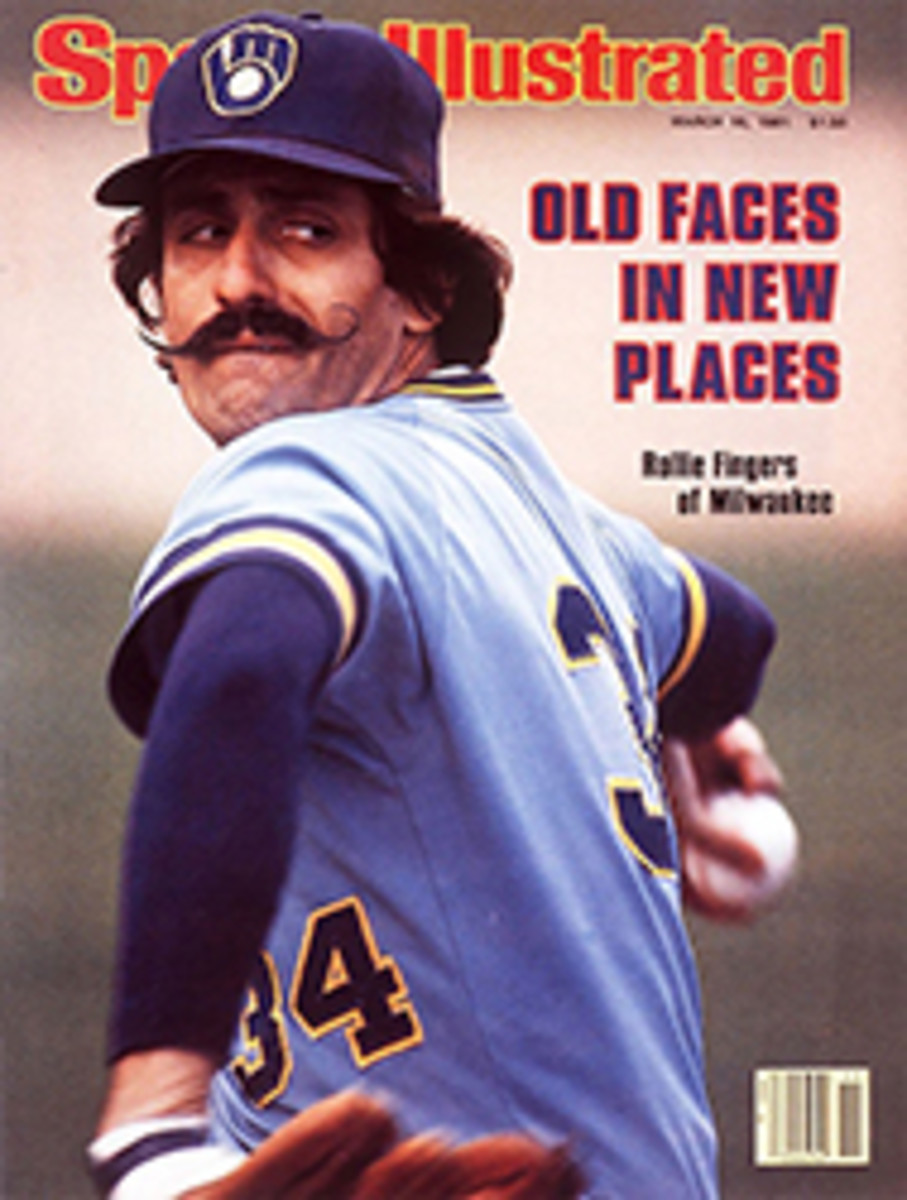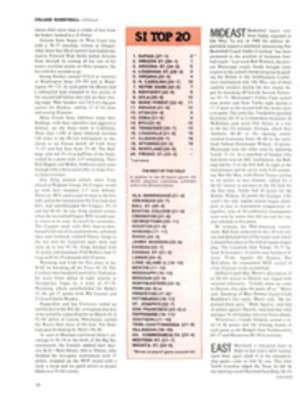
INDOOR SKI RACING? IT TOOK A REAL WISE GUY TO PULL OFF SUCH A SNOW JOB
As far as most of the 300 inhabitants of Cable, Wis. are concerned, Tony Wise's last name should be changed to Foolish. Wise, 59, is a certified son of the North Country; the problem is he sure doesn't act like one. His ideas are so big and brazen that he might as well be from Saudi Arabia. Take indoor ski racing, for instance. Surely no down-to-earth Midwesterner would even think of such an unlikely event. Wise has not only thought of it, but he has also blithely invented a way to do it.
The first surprise he sprung on the home folks occurred 33 years ago when he put a rope tow on a 1,770-foot glacial moraine three miles east of Cable, one of the highest points in Wisconsin. He called it Mount Telemark after the Norwegian county that's considered by some the birthplace of skiing as a sport. Until then, tourists had ventured into that part of the North Country only in the summer to enjoy the scenery and to fish in the spectacular lakes. Next to Wise's rope tow was a small warming hut complete with heated lavatories—an unheard-of luxury in the late 1940s. In the ensuing years he gradually added two T-bars and three chair lifts, nearly 110 miles of cross-country trails, a snow-making system for the dry winters and the four-star, 200-room Telemark Lodge, the lobby of which contains one of the world's most magnificent and biggest fireplaces. As Wise says, "We were never humble."
Now comes Wise's latest brainstorm: a Colosseum, named after the ancient pile in Rome. Wise's Colosseum is a bright, modern, rectangular building that spreads over 64,000 square feet and cost $3 million. (It will eventually be connected to the Telemark Lodge by a tunnel.) Wise could have named it Valhalla (the hall of the supreme god Odin) to keep the Norse motif going, but two years ago when Wise visited Rome on vacation, he was enthralled by the famous ruin and decided to name his arena after it.
Naturally, the townfolk were wondering what Wise was going to do with it. Well, for one thing, it will become a year-round tennis center with programs in the spring and fall directed by well-known pros. It houses four Dynaturf tennis courts, and there are four more courts outside. It's also large enough for 3,000 people to attend conventions or big-band concerts in it, and Wise is just brimming with other ideas—none of them as improbable as indoor cross-country skiing, which is what he put on first.
The 2,000 guests at the Colosseum's grand opening on Dec. 13, 1980 had hardly left the premises when workers began preparing for the first competition of the cross-country season in the U.S., the Gitchi Gami Games, a series of six races for men and women ranging in length from five to 30 kilometers. The racers would still loop out into the woods, but the start and finish lines would be in the Colosseum and the skiers would pass through the arena at the conclusion of each lap of the 2.5-kilometer course, entering it through one door and exiting through another on the opposite side. It was a concept concocted to lure more spectators to the sport by giving them the comforts of seats and temperatures between 40° and 50°.
To prepare the Colosseum for ski races, workers first cover the tennis courts and, indeed, the entire 300-foot length of the arena with 20-foot-wide sheets of insulating plastic and Styrofoam that serve as a bed for the snow. Railroad ties are used as curbs. Then the crew brings in dump trucks of snow, 75 tons of it, and packs it down to a firm, smooth, 10-inch layer. It is groomed and packed again, then tracks are set with a large snowmobile. Bleachers are set up and—very civilized—a bar. But no smoking please. Stationed on a bridge above the exit door is an announcer, and on the wall behind him is a three-panel scoreboard that informs the spectators of standings as well as intermediate and final times. By next season Wise hopes to get the computerized scoreboard used at the 1980 Lake Placid Olympics. He has even devised a way to let spectators in on what happens out in the woods; they can follow the action over 10 TV sets: three cameras cover key points of the outdoor course.
The enthusiastic crowd at the inaugural event consisted mostly of Telemark personnel. "I always wanted to be an armchair coach," said Marty Hall, the former U.S. national and Olympic coach, as he watched some of his charges race by.
"Wait until I tell them about this in Oslo," said Svein Johansen, a Norwegian racer chaser. "They'll choke on their herring. I'd love to see 100,000 Norwegians under a roof at the Holmenkollen, but I don't think it will go. Norwegians like to stand in the cold, because that's the tradition."
"It's the tradition in America to try new things," said Bill Koch, the 1976 silver medalist in the 30-km. cross-country event. "We're really lucky to have a guy like Tony, who's so innovative and puts all his energy into the sport."
Tim Caldwell, who won the two men's individual races in the Gitchi Gami Games, beating Koch, said, "I have a hard time comprehending this. But it's fun going through there and hearing the applause, though I felt like I had to duck to make the first door."
All the racers agreed that the snow was wetter indoors than it was outside. Thus, when in the Colosseum, they had to change from a diagonal stride to double-poling or skating, but nobody complained. Betsy Haines, one of the top U.S. women, said, "It's worth the extra trouble if it will help the sport. I don't see why we wouldn't put up with a little slower snow for a mere hundred yards."
Nobody was happier with the indoor track than Phil Van Valkenberg, the starter, who in most races sent off two skiers every 30 seconds. "I used to have to stand out there with a watch in my hand," he said, pointing to the old starting line, "where it would be around zero degrees. The last two years my hand has actually frozen."
The way Wise tells it, the hardest thing about building the Colosseum was convincing everyone that he needed two removable doors. "Indoor skiing sounded like fantasy-land," he says. "Everybody said, 'God, you're not going to do something as crazy as that!' Barry Elbasani, the architect, wouldn't even talk to me at first. 'Sure, sure,' he would say when I brought it up. I said, 'How can we have skiers come through without removable doors?' I was just being stubborn. 'All we're doing really.' I said, 'is putting two more doors in it, with the drains, a curb and the other things that go with them.' "
There was no real understanding from the architects or the contractors, but Wise prevailed and the building was finally erected to his specifications.
"The sport really does need exposure." Wise says. "In the U.S., at least, it seldom draws a crowd. But the Colosseum will help, and we had to build a ski center anyway. We just needed a bit of imagination and the strength to follow through. You play the part of the fool first, but then you're a hero."

